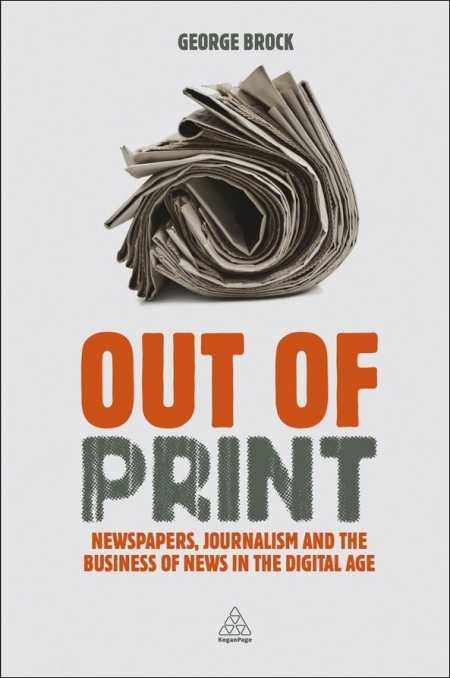Out of Print
Newspapers, Journalism, and the Business of News in the Digital Age
There’s reason to be hopeful—yes, hopeful—about the future of journalism, and George Brock tells us why.
For many, a quest to find a silver lining in the current state of journalism is akin to finding the funnies in the Wall Street Journal. In Out of Print: Newspapers, Journalism and the Business of News in the Digital Age, veteran British newspaperman and journalism professor George Brock takes a refreshingly contrarian stance. With all its “favourites” and “organisations,” the book elicits a Monty Python skit. “I’m not dead,” journalism says from atop a cart of corpses. But surely it will be soon, right? It’s very ill. “I’m getting better.”
The facts: Newsrooms are shrinking. Newspapers are closing. News websites, though drawing in plenty of consumers, aren’t generating enough income to be a sustainable alternative. But Brock argues today’s obstacles aren’t any more formidable than those the industry has faced throughout its always-unstable past.
An in-depth history of media in the United States and Europe—itself reason enough to pick up this book—claims more newspapers were killed by television since the 1950s than by the explosion of the Internet. In fact, the entire second half of the twentieth century, viewed as the heyday of print journalism, was a period of long decline for newspapers.
Brock’s nutgraf (to borrow some journalism slang) is that journalism has been forced to reinvent itself regularly throughout history and will once again. Beyond a chapter titled “Throwing Spaghetti at the Wall”—try a little of everything and see what sticks—there aren’t many potential solutions offered in Out of Print, mainly because there’s still much to be learned about this constantly changing digital age. But Brock is clear that an industry typically resistant to change must do so to capitalize on expanding opportunities and, ultimately, digital communication will be seen as a positive influence on journalism.
The chapter “Clues to the Future” does investigate a number of innovative approaches being used by current digital outlets to make themselves sustainable despite a lack of necessary advertising income, such as paywalls, philanthropy, and government subsidies. Generating the income necessary to support original reporting is a dilemma that may not be solved, Brock writes, but “it is certain that there is no way back to the news media of the 20th century” and “there is no choice but to find ways of supporting journalism in new conditions.”
An academic book at its core, with plenty of bibliographic notes and a hefty index, Out of Print should still appeal to the masses. As you’d expect from a man who spent decades as a reporter and editor before taking over the journalism department at City University in London, Brock’s writing is crisp, concise, and clear and his research extensive. The book is impeccably edited and presented in a very reader-friendly fashion with each of its ten chapters split into easily referenced sections via multiple subheads.
As reference material, Out of Print is an essential addition to any media-related collection. To members of the journalism field who’ve endured years of angst over the future of their profession, it’s so much more. Brock’s analysis is too well-reasoned and supported to be easily dismissed as blind optimism, lighting a beacon of hope to those interested in seeing journalism right itself from its current state of upheaval.
Reviewed by
Rich Rezler
Disclosure: This article is not an endorsement, but a review. The publisher of this book provided free copies of the book and paid a small fee to have their book reviewed by a professional reviewer. Foreword Reviews and Clarion Reviews make no guarantee that the publisher will receive a positive review. Foreword Magazine, Inc. is disclosing this in accordance with the Federal Trade Commission’s 16 CFR, Part 255.

